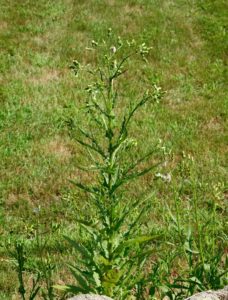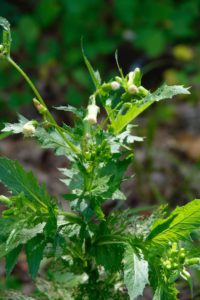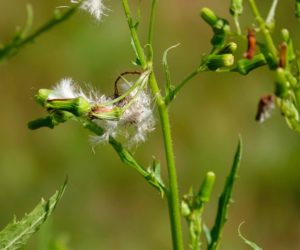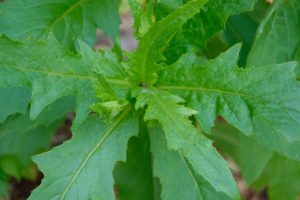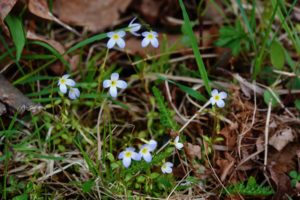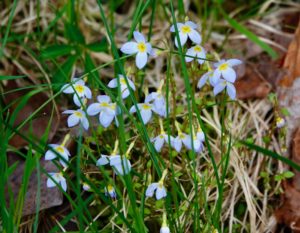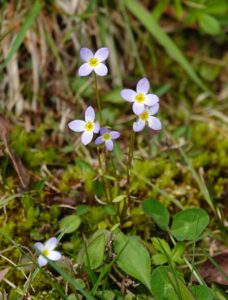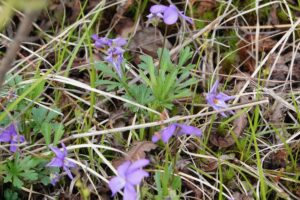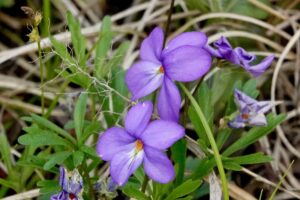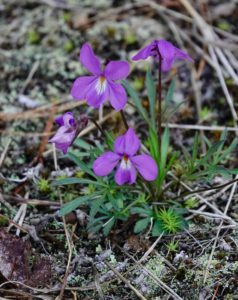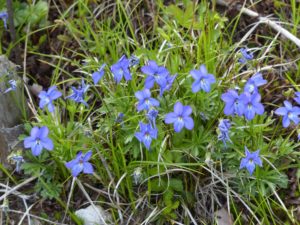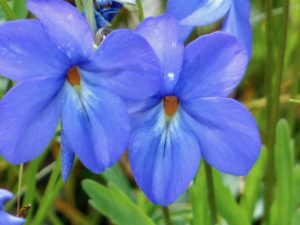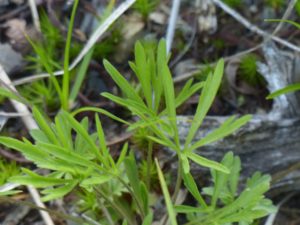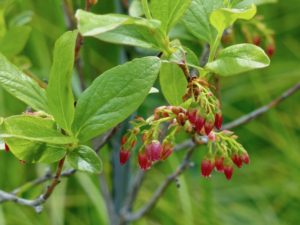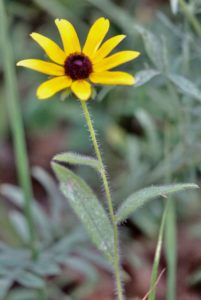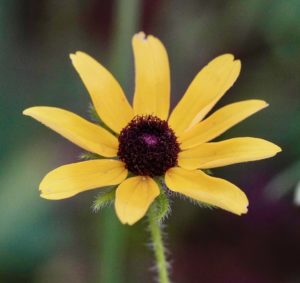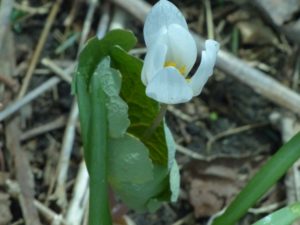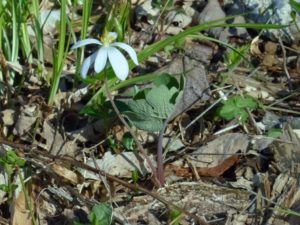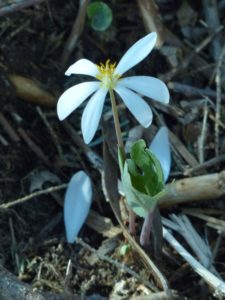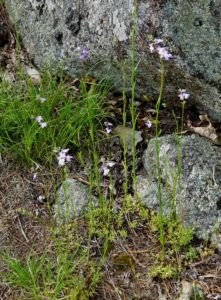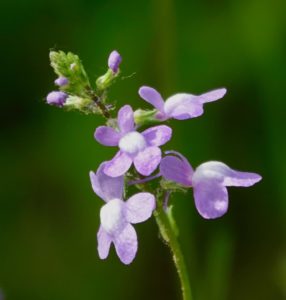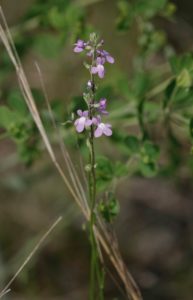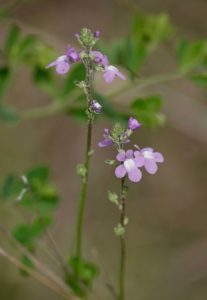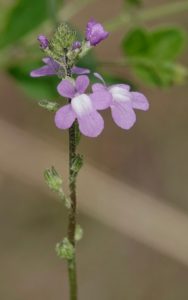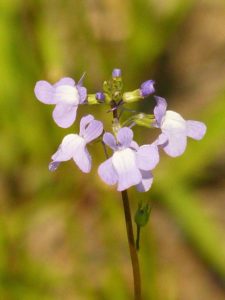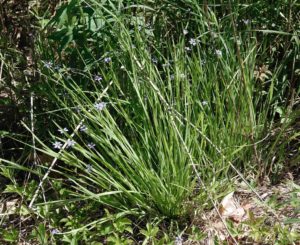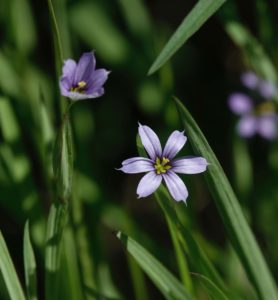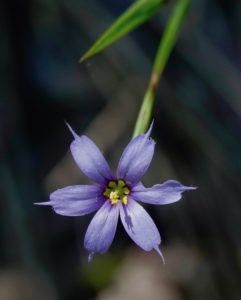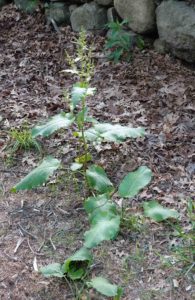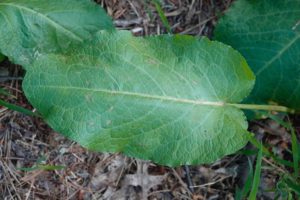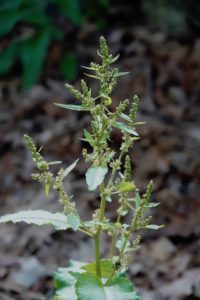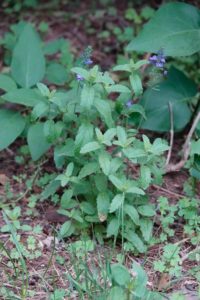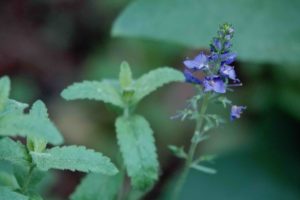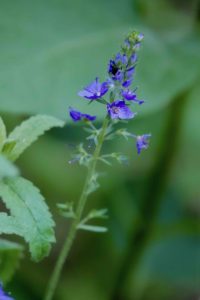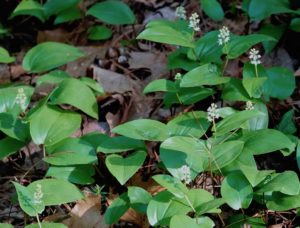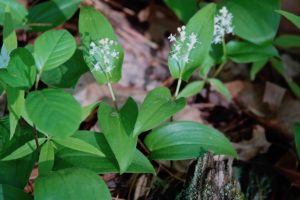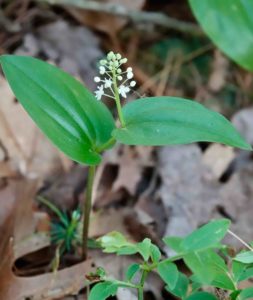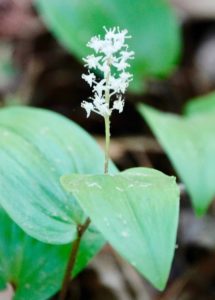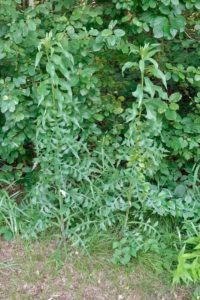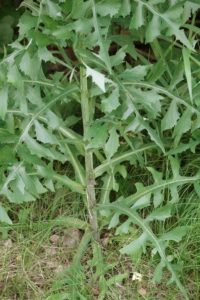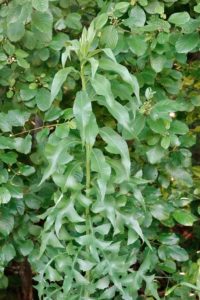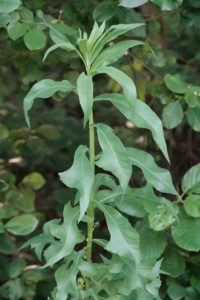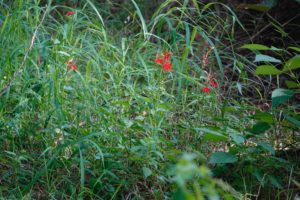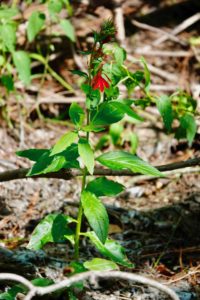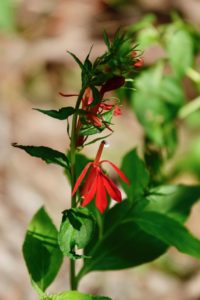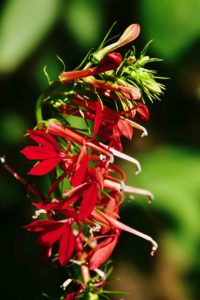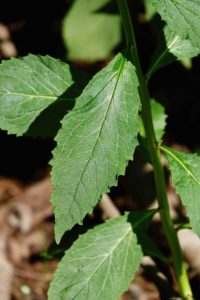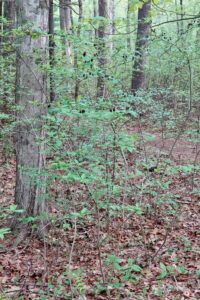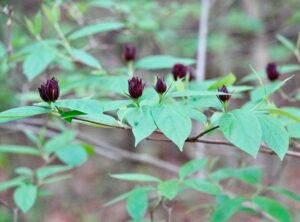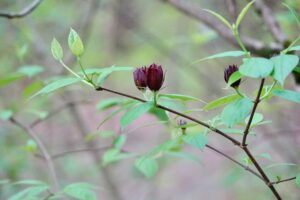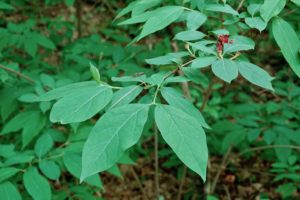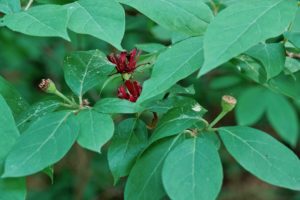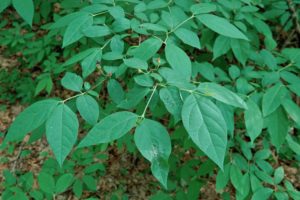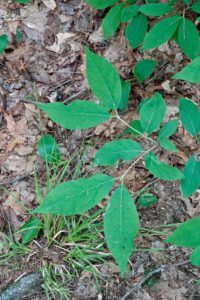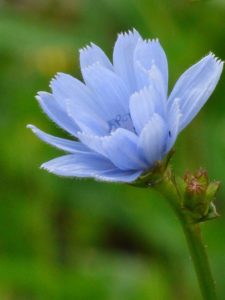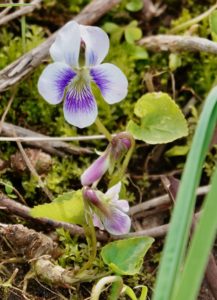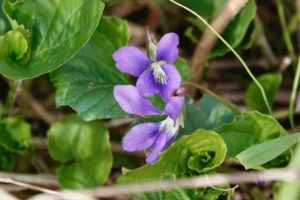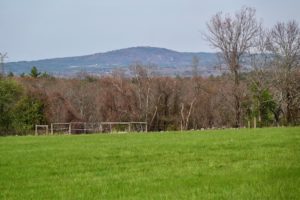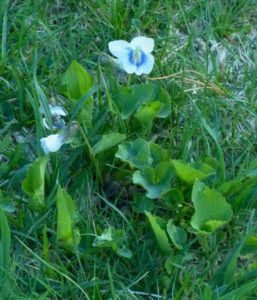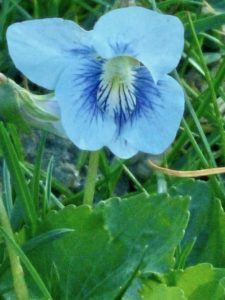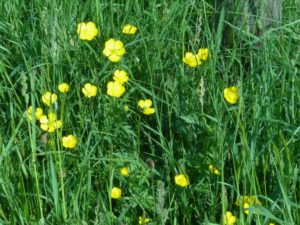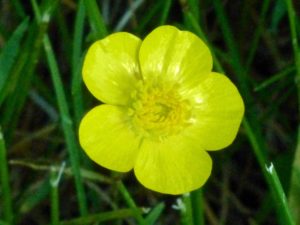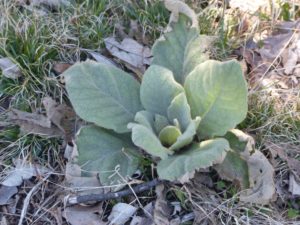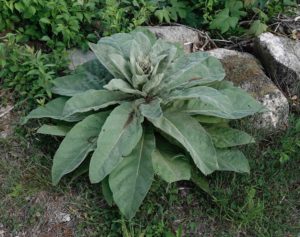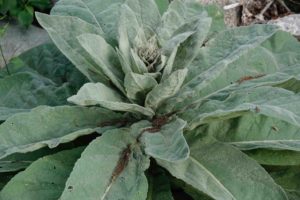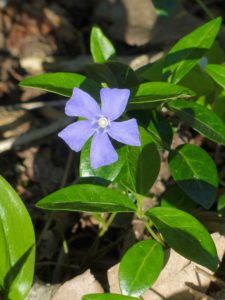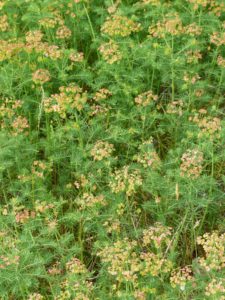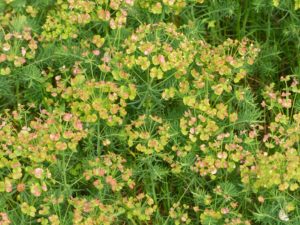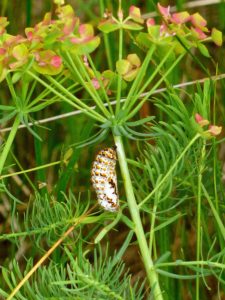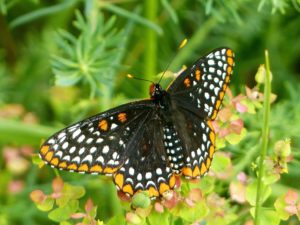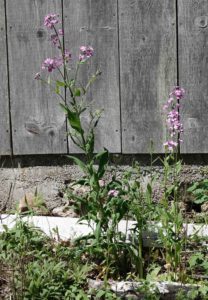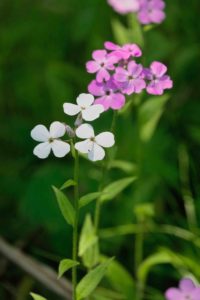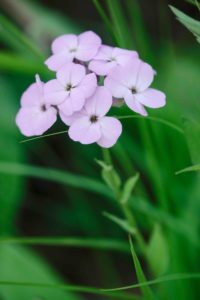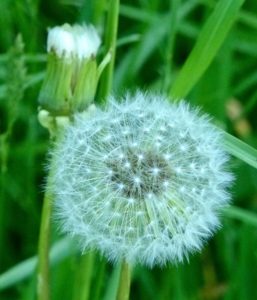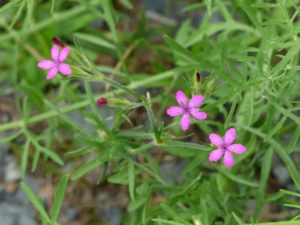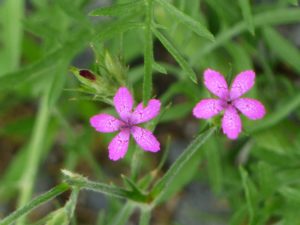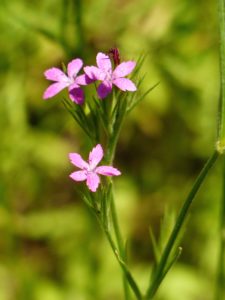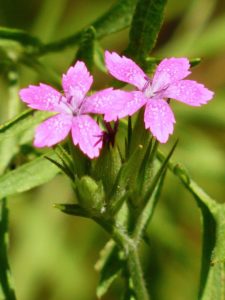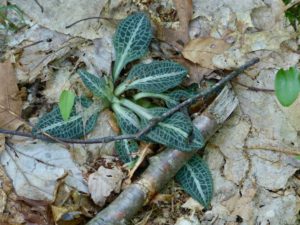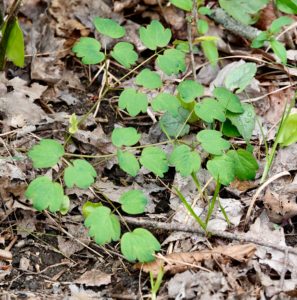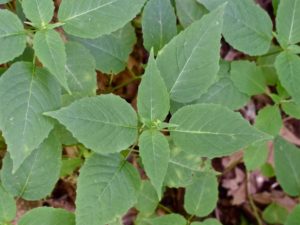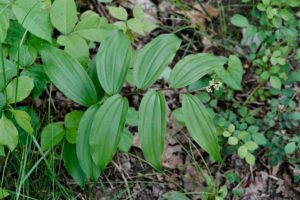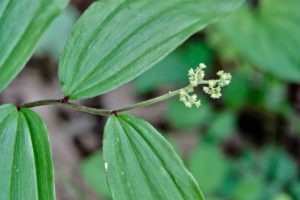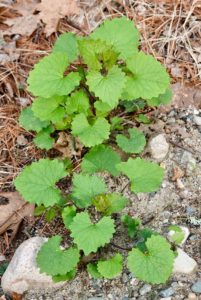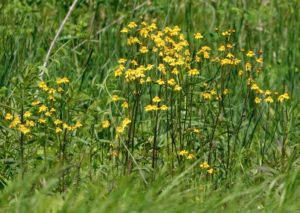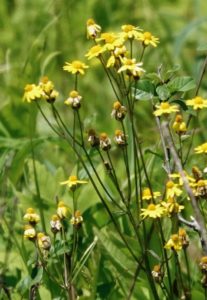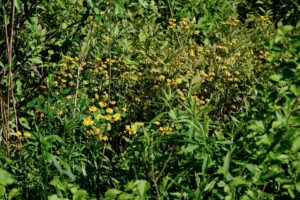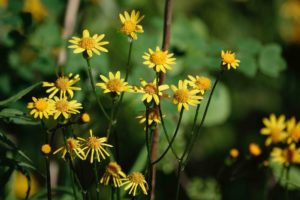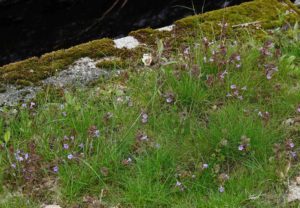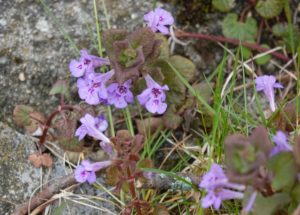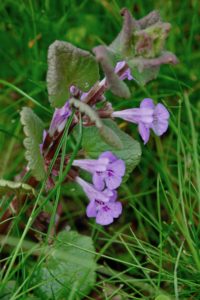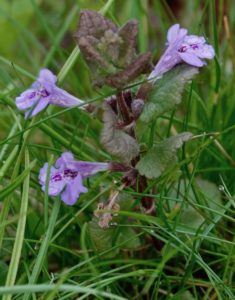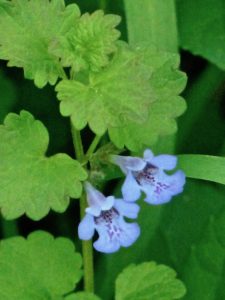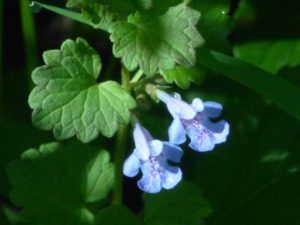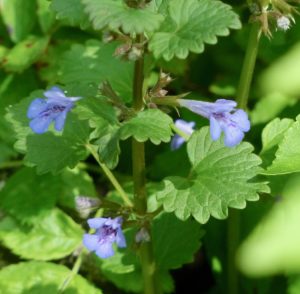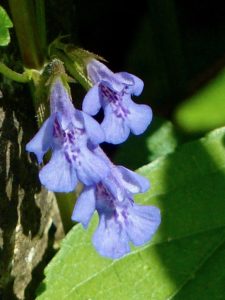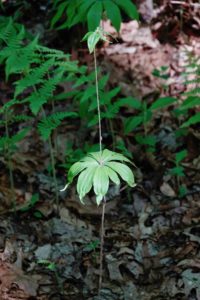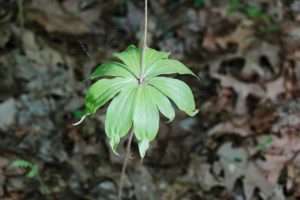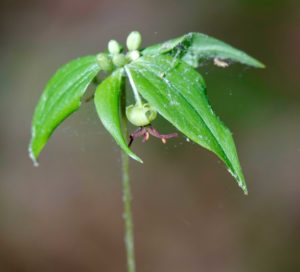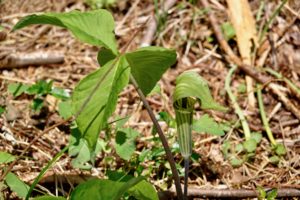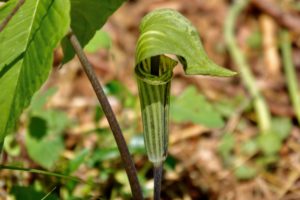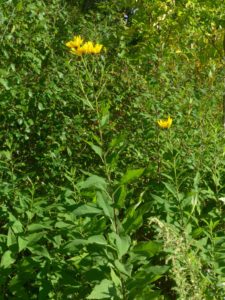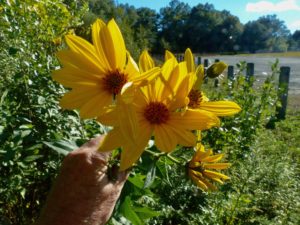Sightings – Flowers
Observer: Rita Corey
Observation Date: 8/13/20
Observation Time: 2:00 p.m.
Observation Location: Rattlesnake Hill
Common Name: American burnweed (a.k.a. fireweed)
Scientific Name: Erechtites hieraciifolius
Comments: Burnweed is a native annual in the daisy family, Asteraceae. American Burnweed is an underrated and unappreciated wild edible. Although Burnweed has no history as a food source here in America, everywhere else in the world where it grows it is eaten. It’s a common food in all of Asia and most of Europe. It also has medicinal properties2. The oil derived from the plant can be used to treat wounds, hemorrhages, poison ivy rashes, and other ailments such as piles.
Burnweed got its unique name by being one of the first plants to grow after a fire has burned out an area. Burnweed is also referred to as fireweed.
More Information: Go Botany
Observer: Paul Lauenstein
Observation Date: 4/27/23
Observation Time: 3:45 p.m.
Observation Location: Moose Hill Farm (TTOR)
Common Name: Azure Bluet
Scientific Name: Houstonia caerulea
Comments: Azure bluets are also know as Quaker ladies.
More Information: Wikipedia
Observer: Paul Lauenstein
Observation Date: 5/4/24
Observation Time: 11:40 a.m.
Observation Location: Moose Hill Farm (TTOR)
Common Name: Azure Bluet
Scientific Name: Houstonia caerulea
Comments: Azure bluets are also know as Quaker ladies.
More Information: Wikipedia
Observer: Paul Lauenstein
Observation Date: 6/2/11
Observation Time: 1:00 p.m.
Observation Location: Gavins Pond Road near soccer field parking lot
Common Name: Beach Rose
Scientific Name: Rosa rugosa
More Information: University of Rhode Island
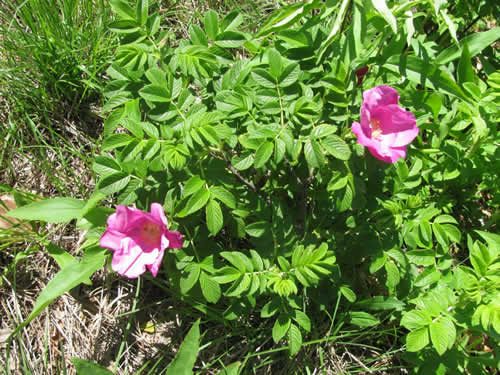
Observer: Paul Lauenstein
Observation Date: 5/12/11
Observation Time: 8:15 a.m.
Observation Location: meadow near Gavins Pond dam
Common Name: Bird’s Foot Violet
Scientific Name: Viola pedata
Comments: The leaves of this pretty wildflower are reminiscent of bird’s feet. Not a common violet locally, only one site in Blue Hills. Likes dry sandy soils; has also been spotted in woods north of Knollwood Cemetery in Sharon.
More Information: US Wildflowers Database (USDA)
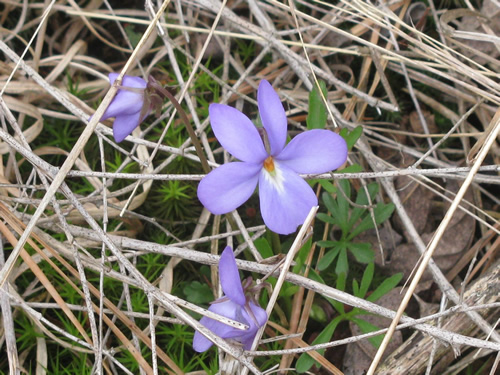
Observer: Paul Lauenstein
Observation Date: 5/14/25
Observation Time: 4:30 p.m.
Observation Location: under power lines across the street from Ward’s Berry Farm
Common Name: Bird’s Foot Violet
Scientific Name: Viola pedata
Comments: Bird’s foot violets are perennials with five-petaled flowers that bloom from March to June. The flowers are typically blue, but can range from white to purple. They spread by sending out rhizomes. The fan-shaped leaves have three lobes which are said to resemble a bird’s foot.
More Information: US Wildflowers Database (USDA)
Observer: Paul Lauenstein
Observation Date: 5/19/20
Observation Time: 9:20 a.m.
Observation Location: near Gavins Pond
Common Name: Bird’s Foot Violet
Scientific Name: Viola pedata
Comments: Bird-foot violets are perennials with five-petaled flowers that bloom from March to June. The flowers are typically blue, but can range from white to purple. They spread by sending out rhizomes. The fan-shaped leaves have three lobes which are said to resemble a bird’s feet.
More Information: US Wildflowers Database (USDA)
Observer: Paul Lauenstein
Observation Date: 5/27/19
Observation Time: 4:40 p.m.
Observation Location: Power lines near Walpole St.
Common Name: Bird’s Foot Violet
Scientific Name: Viola pedata
Comments: Bird-foot violets are perennials with five-petaled flowers that bloom from March to June. The flowers are typically blue, but can range from white to purple. They spread by sending out rhizomes. The fan-shaped leaves have three lobes which are said to resemble a bird’s feet.
More Information: US Wildflowers Database (USDA)
Observer: Paul Lauenstein
Observation Date: 5/30/14
Observation Time: 12:05 p.m.
Observation Location: Power lines near Walpole St.
Common Name: Bird’s Foot Violet
Scientific Name: Viola pedata
Comments: Bird-foot violets are perennials with five-petaled flowers that bloom from March to June. The flowers are typically blue, but can range from white to purple. They spread by sending out rhizomes. The fan-shaped leaves have three lobes which are said to resemble bird feet.
More Information: US Wildflowers Database (USDA)
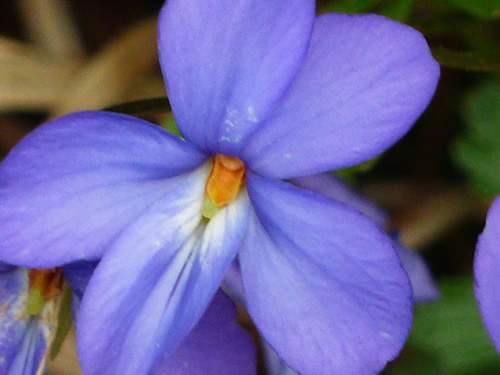
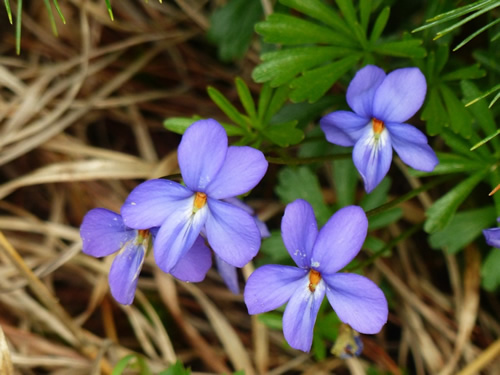
Observer: Paul Lauenstein
Observation Date: 6/6/11
Observation Time: 1:40 p.m.
Observation Location: Gavins Pond Road (bridge near soccer
fields)
Common Name: Bittersweet Nightshade
Scientific Name: Solanum dulcamara
More Information: King County, WA
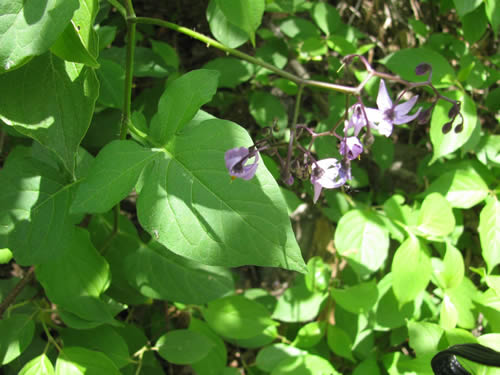
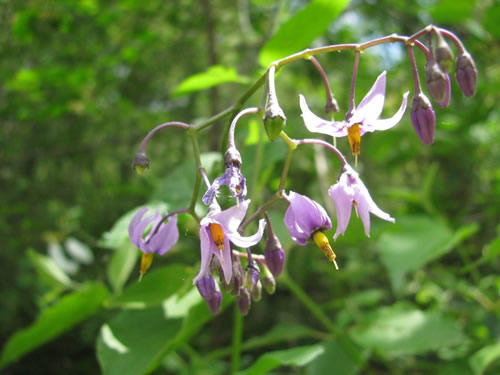
Observer: Paul Lauenstein
Observation Date: 5/27/19
Observation Time: 4:20 p.m.
Observation Location: Beneath high tension wires near So. Walpole St.
Common Name: Black Huckleberry
Scientific Name: Gaylussacia baccata
Comments: These are the distinctive bright red unopened flower buds of black huckleberry, Gaylussacia baccata. They are typically no more than waist-high. They often form a near-continuous shrub layer in dryish oak woods. In moister soils they tend to be replaced by dangleberry, Gaylussacia frondosa.
Blueberry bushes are similar, but have green rather than blackish second-year twigs. The berries of huckleberries are very similar to the berries of blueberries, except the latter usually contain more seeds (8-20) that are smaller in size. The foliage and woody stems of Black Huckleberry are quite similar to those of low-bush blueberries (particularly Vaccinium pallidum), except the leaf undersides of the former shrub are covered with resinous yellow dots, while the leaf undersides of blueberries lack such resinous dots.
More Information: Illinois Wildflowers
Observer: Paul Lauenstein
Observation Date: 7/12/20
Observation Time: 6:50 p.m.
Observation Location: along Gavins Pond Road
Common Name: Black-eyed Susan
Scientific Name: Rudbeckia hirta
Comments: Related to cone flowers, this native biennial forms a rosette of leaves the first year, followed by flowers the second year. It is covered with hairs that give it a slightly rough texture.
More Information: USDA and wildflower.org
Observer: Paul Lauenstein
Observation Date: 7/23/09
Observation Time: 9:30 a.m.
Observation Location: Gavins Pond Road
Common Name: Black-eyed Susans
Scientific Name: Rudbeckia hirta
Comments: The genus name honors Olaus Rudbeck, who was a professor of botany at the University of Uppsala in Sweden and was one of Linnaeus’s teachers. The specific epithet “hirta” refers to the trichomes (hairs) occurring on leaves and stems.
More Information: USDA
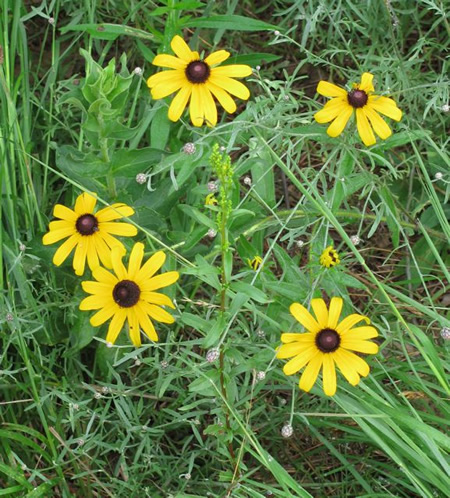
Observer: Paul Lauenstein
Observation Date: 7/5/13
Observation Time: 6:15 p.m.
Observation Location: Gavins Pond area
Common Name: Black-eyed Susans
Scientific Name: Rudbeckia hirta
Comments: A type of daisy, these were growing wild in the field near Gavins Pond Dam.
More Information: USDA
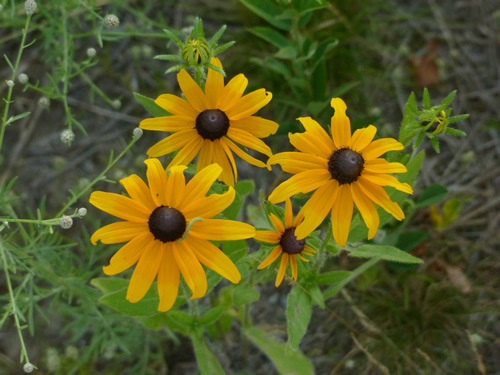
Observer: Paul Lauenstein
Observation Date: 5/1/18
Observation Time: 10:30 a.m.
Observation Location: Moose Hill Audubon Wildlife Sanctuary
Common Name: Bloodroot
Scientific Name: Sanguinaria canadensis
Comments: Blood-root is an attractive spring ephemeral, traditionally used in cough remedies. However, it has been characterized as unsafe by the United States Food and Drug Administration because of the presence of the toxic alkaloid sanguinarine. This flower drops its petals within a day or two of blooming.
Please do not dig up wildflowers!
More Information: Go Botany
Observer: Paul Lauenstein
Observation Date: 5/31/11
Observation Time: 3:15 p.m.
Observation Location: Gavins Pond area
Common Name: Blue Flag Iris
Scientific Name: Iris versicolor
More Information: Wikipedia
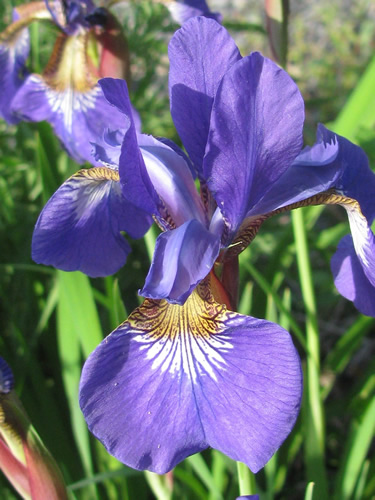
Observer: Peter Higgins
Observation Date: 06/08/08
Observation Time: 6:55 a.m.
Observation Location: Moose Hill Audubon Wildlife Sanctuary
Common Name: Blue Flag Iris
Scientific Name: Iris versicolor
Comments: This beautiful group of wild blue flag iris was growing in the field near the boardwalk.
More Information: LakeForest.edu

Observer: Paul Lauenstein
Observation Date: 5/16/23
Observation Time: 4:15 p.m.
Observation Location: Moose Hill Audubon Wildlife Sanctuary (Bluff Trail)
Common Name: Blue Toadflax
Scientific Name: Nuttallanthus canadensis
Comments: These diminutive wildflowers bloom from April to September. At first glance they look like nondescript spindly weeds, but viewed up close they are stunningly beautiful.
More Information: Conn. Botanical Society
Observer: Paul Lauenstein
Observation Date: 5/31/11
Observation Time: 4:05 p.m.
Observation Location: Gavins Pond area
Common Name: Blue Toadflax
Scientific Name: Nuttallanthus canadensis
More Information: Conn. Botanical Society
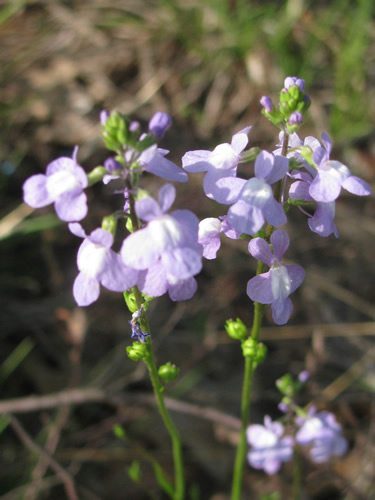
Observer: Paul Lauenstein
Observation Date: 6/9/20
Observation Time: 2:50 p.m.
Observation Location: meadow near Gavins Pond dam
Common Name: Blue Toadflax
Scientific Name: Nuttallanthus canadensis
Comments: These diminutive wildflowers bloom from April to September.
More Information: Conn. Botanical Society
Observer: Paul Lauenstein
Observation Date: 7/11/15
Observation Time: 3:15 p.m.
Observation Location: Gavins Pond area
Common Name: Blue Toadflax
Scientific Name: Nuttallanthus canadensis
Comments: Flowers from April to September.
More Information: Conn. Botanical Society
Observer: Paul Lauenstein
Observation Date: 5/30/20
Observation Time: 3:05 p.m.
Observation Location: Moose Hill Farm (TTOR)
Common Name: Blue-eyed grass
Scientific Name: Sisyrinchium angustifolium
Comments: Blue-eyed grass grows in fields, meadows and the edges of wetlands. This clump was growing along the dirt road under the high-tension lines. Except in spring when its small, blue flowers make it conspicuous, this plant is hard to pick out among other kinds of grasses.
Native Americans cooked and ate the greens, and used the plant medicinally to regulate the bowels.
More Information: Go Botany
Observer: Paul Lauenstein
Observation Date: 5/14/11
Observation Time: 3:20 p.m.
Observation Location: meadow near Gavins Pond dam
Common Name: Blueberry
Scientific Name: Vaccinium corymbosum
Comments: Blueberries grow wild in the woods around Sharon, often near ponds and streams, where their roots can access moisture during dry weather. They flower in May and ripen in mid-summer.
More Information: Mother Earth News

Observer: Paul Lauenstein
Observation Date: 6/13/20
Observation Time: 4:55 p.m.
Observation Location: Moose Hill Audubon Wildlife Sanctuary
Common Name: Broad-leaved Dock
Scientific Name: Rumex obtusifolius
Comments: Rumex obtusifolius, commonly known as broad-leaved dock, bitter dock, bluntleaf dock, dock leaf or butter dock, is a perennial plant in the family Polygonaceae. It is native to Europe, but is found on all temperate continents. It is a highly invasive species in some zones, resulting from its abundant seed dispersal, adaptability to reproduce, aggressive roots, ability to tolerate extreme climates, and hardiness.
More Information: Wikipedia
Observer: Paul Lauenstein
Observation Date: 6/7/20
Observation Time: 6:30 p.m.
Observation Location: 4 Gavins Pond Road (my back yard)
Common Name: Broad-leaved Speedwell
Scientific Name: Veronica austriaca
Comments: Broad-leaved speedwell, also know as large speedwell, Austrian speedwell, or saw-leaved speedwell, is a perennial, herbaceous plant that is native to Europe. It is cultivated and can escape the garden setting.
Observer: Paul Lauenstein
Observation Date: 6/14/09
Observation Time: 11:30 a.m.
Observation Location: Moose Hill Farm, Trustees of Reservations land
Common Name: Bull Thistle
Scientific Name: Cirsium vulgare
More Information: UGA Center for Invasive Species and Ecosystem Health
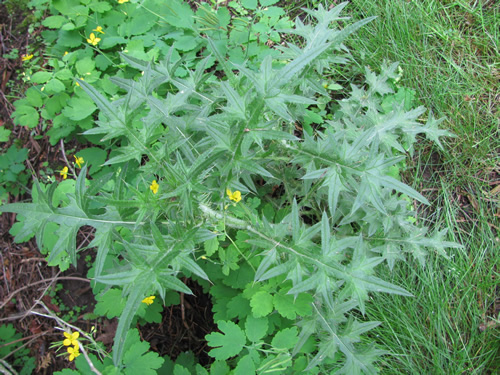
Observer: Paul Lauenstein
Observation Date: 7/15/12
Observation Time: 5:00 p.m.
Observation Location: Gavins Pond Rd. soccer field parking lot
Common Name: Bull Thistle
Scientific Name: Cirsium vulgare
Comments: The beautiful blossom of the bull thistle comes with sharp thorns.
More Information: Wikipedia
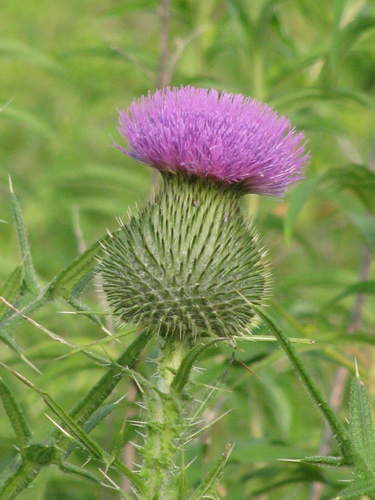
Observer: Paul Lauenstein
Observation Date: 5/17/14
Observation Time: 12:55 p.m.
Observation Location: Beaver Brook near tennis courts
Common Name: Canada Mayflower
Scientific Name: Maianthemum canadense
Comments: This common plant carpets the forest floor in many parts of Sharon.
More Information: Wikipedia
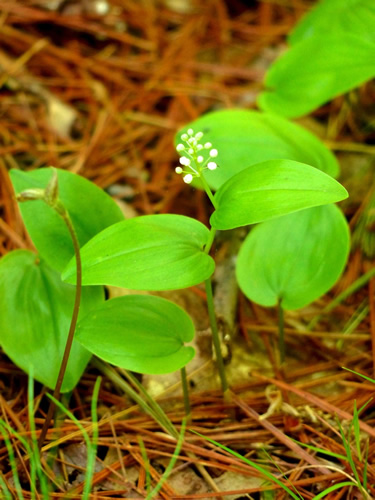
Observer: Paul Lauenstein
Observation Date: 5/27/20
Observation Time: 5:15 p.m.
Observation Location: Beaver Brook near tennis courts
Common Name: Canada Mayflower
Scientific Name: Maianthemum canadense
Comments: This common plant carpets the forest floor in many parts of Sharon.
More Information: Wikipedia
I took this photo at the same place on June 2:
Observer: Paul Lauenstein
Observation Date: 6/4/11
Observation Time: 2:40 p.m.
Observation Location: Conservation land near Billings Street
Common Name: Canada Mayflower
Scientific Name: Maianthemum canadense
Comments: Carpets the ground in many wooded areas of Sharon.
More Information: Wikipedia
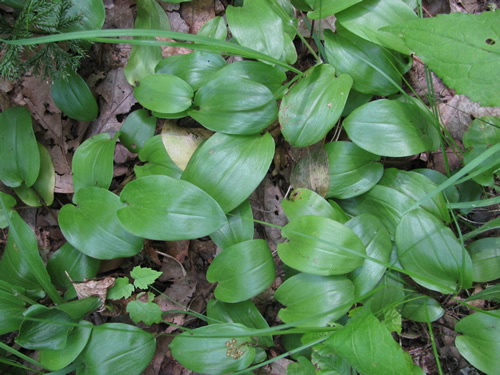
Observer: Paul Lauenstein
Observation Date: 7/12/20
Observation Time: 6:40 p.m.
Observation Location: along Gavins Pond Road
Common Name: Canada Wild Lettuce
Scientific Name: Lactuca canadensis
Comments: This edible plant can grow to over six feet tall. It has leaves that are shaped like those of a dandelion, and produces dandelion-like yellow flowers.
More Information: Wikipedia and iNaturalist
Observer: Rita Corey
Observation Date: 8/13/20
Observation Time: 3:15 p.m.
Observation Location: Morse St.
Common Name: Cardinal Flower
Scientific Name: Lobelia cardinalis
Comments: Cardinal flowers are typically found near water. These were growing in a dry streambed.
Since most insects find it difficult to navigate the long tubular flowers, cardinal flowers depend on hummingbirds, which feed on the nectar, for pollination. Its common name alludes to the bright red robes worn by Roman Catholic cardinals.
Although relatively common, overpicking this handsome wildflower has resulted in its scarcity in some areas. Please do not dig up wildflowers.
More Information: Lady Bird Johnson Wildflower Center
Observer: Paul Lauenstein
Observation Date: 5/8/25
Observation Time: 7:20 a.m.
Observation Location: Moose Hill Audubon Wildlife Sanctuary
Common Name: Carolina Allspice
Scientific Name: Calycanthus floridus
Comments: Also known as Carolina Sweetshrub, this shrub deserves its name. The blossoms are fragrant and the leaves are aromatic when bruised. It’s range has expanded to New England from the middle-Atlantic states as a result of transplantation by humans.
More Information: Wikipedia and North Carolina Native Plant Society
Observer: Paul Lauenstein
Observation Date: 6/13/20
Observation Time: 6:00 p.m.
Observation Location: Moose Hill Audubon Wildlife Sanctuary
Common Name: Carolina Allspice
Scientific Name: Calycanthus floridus
Comments: Also known as Carolina Sweetshrub, this plant deserves its name. The blossoms are fragrant and the leaves are aromatic when bruised. I wish I had encountered this plant a week earlier when the blossoms were at their prime. Maybe next year…
More Information: North Carolina Native Plant Society
Observer: Paul Lauenstein
Observation Date: 6/4/24
Observation Time: 9:05 a.m.
Observation Location: Moose Hill Audubon Wildlife Sanctuary
Common Name: Carolina Allspice
Scientific Name: Calycanthus floridus
Comments: Also known as Carolina Sweetshrub, this plant deserves its name. The blossoms are fragrant and the leaves are aromatic when bruised.
More Information: Wikipedia and North Carolina Native Plant Society
Observer: Paul Lauenstein
Observation Date: 6/14/09
Observation Time: 11:30 a.m.
Observation Location: Moose Hill Farm, Trustees of Reservations land
Common Name: Celandine
Scientific Name: Chelidonium majus
More Information: Flora Health Herb Encyclopedia
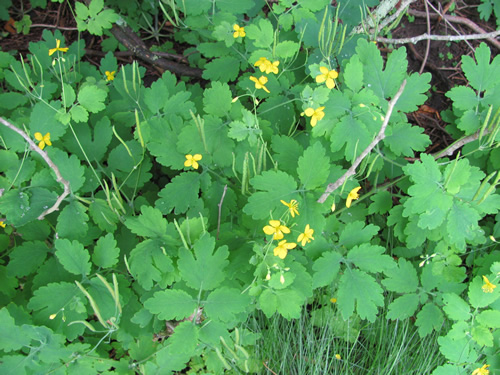
Observer: Paul Lauenstein
Observation Date: 6/27/15
Observation Time: 2:45 p.m.
Observation Location: Gavins Pond Road near soccer fields
Common Name: Chicory
Scientific Name: Cichorium intybus
Comments: A perennial herb with blue, lavender, or occasionally white flowers, chicory grows as a wild plant on roadsides in its native Europe, and in North America and Australia, where it has become naturalized. Common chicory is also known as blue sailors, succory, and coffeeweed.
More Information: Wikipedia
Observer: Paul Lauenstein
Observation Date: 7/7/10
Observation Time: 7:05 a.m.
Observation Location: Gavins Pond Road near soccer fields
Common Name: Chicory
Scientific Name: Cichorium intybus
Comments: A perennial herb with blue, lavender, or occasionally white flowers, chicory grows as a wild plant on roadsides in its native Europe, and in North America and Australia, where it has become naturalized. Common chicory is also known as blue sailors, succory, and coffeeweed.
More Information: Wikipedia
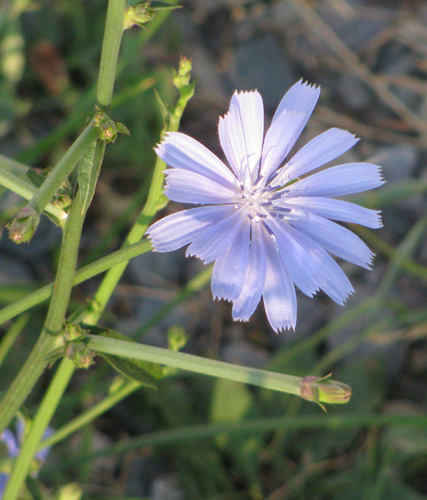
Observer: Paul Lauenstein
Observation Date: 4/27/24
Observation Time: 4:10 p.m.
Observation Location: Moose Hill Farm (The Trustees of Reservations)
Common Name: Common Blue Violet
Scientific Name: Viola sororia
Comments: The blossoms of common blue violets come in colors ranging from white to purple. The two plants shown in the photos were growing a few feet from each other.
More information: Wild Edible
The pasture at Moose Hill Farm near the spot where these violets were growing:
Observer: Paul Lauenstein
Observation Date: 5/5/18
Observation Time: 8:00 a.m.
Observation Location: Moose Hill Audubon Wildlife Sanctuary
Common Name: Common Blue Violet
Scientific Name: Viola sororia
Comments: For information, see: http://thebotanicalhiker.blogspot.com/2015/04/eating-wild-identifying-wild-edible.html
Observer: Paul Lauenstein
Observation Date: 5/7/23
Observation Time: 6:25 a.m.
Observation Location: Moose Hill Audubon Wildlife Sanctuary
Common Name: Common Blue Violet
Scientific Name: Viola sororia
Comments: These were growing along the driveway leading into the parking lot. Please do not dig up wildflowers.
More information: The Botanical Hiker
Observer: Paul Lauenstein
Observation Date: 5/16/23
Observation Time: 3:40 p.m.
Observation Location: Moose Hill Audubon Wildlife Sanctuary
Common Name: Common Buttercup
Scientific Name: Ranunculus acris
Comments: The Common Buttercup (Ranunculus acris); also called Tall Buttercup, Meadow Buttercup and Blister Plant; is a perennial forb/herb in the Ranunculaceae family. The family and genus names come from the Latin for “little frog” because this family prefers wet areas. It’s also called Tall Crowfoot because of the irregular shape of the leaves. The species name is from the Latin for “bad tasting,” that is, acrid. This plant has a very acrid fluid (glycoside ranunculin) that discourages foraging by animals.
More Information: French Hill Pond Field Plants and Go Botany
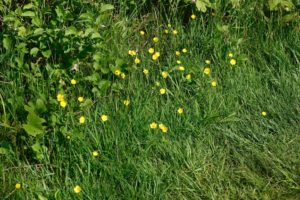
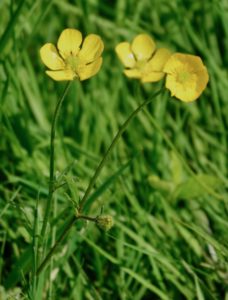
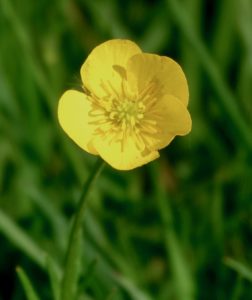
Observer: Paul Lauenstein
Observation Date: 5/23/18
Observation Time: 8:55 a.m.
Observation Location: Moose Hill Farm (TTOR)
Common Name: Common Buttercup
Scientific Name: Ranunculus acris
Comments: The Common Buttercup (Ranunculus acris); also called Tall Buttercup, Meadow Buttercup and Blister Plant; is a perennial forb/herb in the Ranunculaceae family. The family and genus names come from the Latin for “little frog” because this family prefers wet areas. It’s also called Tall Crowfoot because of the irregular shape of the leaves. The species name is from the Latin for “bad tasting,” that is, acrid. This plant has a very acrid fluid (glycoside ranunculin) that discourages foraging by animals.
More Information: French Hill Pond Field Plants and Go Botany
Observer: Paul Lauenstein
Observation Date: 4/16/19
Observation Time: 2:00 p.m.
Observation Location: Moose Hill Audubon Wildlife Sanctuary
Common Name: Common Mullein
Scientific Name: Verbascum thapsus
Comments: Verbascum thapsus has a wide native range including Europe, northern Africa and Asia, from the Azores and Canary Islands east to western China, north to the British Isles, Scandinavia and Siberia, and south to the Himalayas. In the United States it was imported very early in the 18th century and cultivated for its medicinal and piscicide properties. By 1818, it had begun spreading so much that Amos Eaton thought it was a native plant. In 1839 it was already reported in Michigan and in 1876, in California. It is now found commonly in all the states.
More Information: Wikipedia
Observer: Paul Lauenstein
Observation Date: 6/13/20
Observation Time: 5:15 p.m.
Observation Location: Moose Hill Audubon Wildlife Sanctuary
Common Name: Common Mullein
Scientific Name: Verbascum thapsus
Comments: Verbascum thapsus has a wide native range including Europe, northern Africa and Asia, from the Azores and Canary Islands east to western China, north to the British Isles, Scandinavia and Siberia, and south to the Himalayas. In the United States it was imported very early in the 18th century and cultivated for its medicinal and piscicide (fish poisoning) properties. By 1818, it had begun spreading so much that Amos Eaton thought it was a native plant. In 1839 it was already reported in Michigan and in 1876, in California. It is now found commonly in all the states.
The leaves are kind of fuzzy. A tall stalk of yellow flowers will shoot up soon from the main plant.
More Information: Wikipedia
Observer: Paul Lauenstein
Observation Date: 7/11/10
Observation Time: 9:45 a.m.
Observation Location: Gavins Pond Road
Common Name: Common Mullein
Scientific Name: Verbascum thapsus
Comments: Mullein is widely used for herbal remedies, with well-established emollient and astringent properties. Mullein remedies are especially recommended for coughs and related problems, but also used in topical applications against a variety of skin problems. The plant has also been used to make dyes and torches.
More Information: Wikipedia
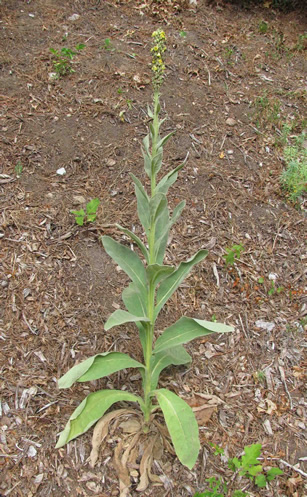
Observer: Paul Lauenstein
Observation Date: 5/21/19
Observation Time: 7:00 a.m.
Observation Location: Moose Hill Audubon Wildlife Sanctuary
Common Name: Creeping Myrtle
Scientific Name: Vinca minor
Comments: Also known as dwarf periwinkle, this non-native plant comes from Europe. It makes a good groundcover, and it produces lovely purple blossoms in spring and into summer, but once established it spreads and is hard to eradicate.
More Information: Wikipedia
Observer: Paul Lauenstein
Observation Date: 6/12/15
Observation Time: 4:30 p.m.
Observation Location: conservation land at Lakeview & Morse Streets
Common Name: Cypress Spurge
Scientific Name: Euphorbia cyparissias
Comments: Cypress spurge is an invasive perennial plant from Eurasia. Its extensive underground root system spreads by means of lateral root buds. It proliferates into large clonal colonies.
Baltimore checkerspot butterflies feed on cypress spurge flowers.
More Information: Vermont Invasives
Cypress spurge with Baltimore checkerspot butterfly chrysalis:
Cypress spurge with Baltimore checkerspot butterfly:
Observer: Paul Lauenstein
Observation Date: 6/28/10
Observation Time: 1:55 p.m.
Observation Location: 147 Wolomolopoag St., Sharon
Common Name: Daisy Fleabane
Scientific Name: Erigeron annuus
Comments: Fleabanes get their common name from an old belief that they repelled fleas and other pestiferous insects. Early European settlers in North America stuffed mattresses with fleabane and hung clusters of plants in their cabins to drive out fleas. The custom persisted for generations, even though Daisy Fleabane appears to have no insect-repelling ability whatsoever. In fact, the plant ATTRACTS insects—not only pollinators but also tiny herbivores that nibble away the ray flowers and leave only the central disk.
More Information: Hilton Pond Center
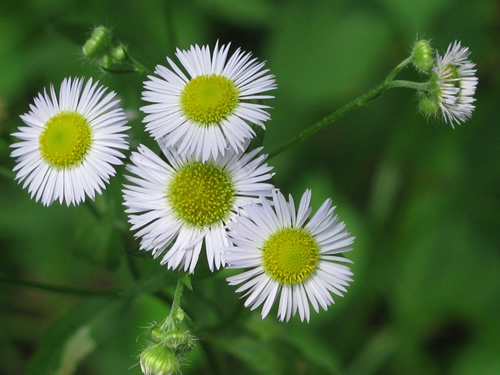
Observer: Paul Lauenstein
Observation Date: 7/23/09
Observation Time: 9:45 a.m.
Observation Location: Gavins Pond Road
Common Name: Daisy Fleabane
Scientific Name: Erigeron annuus
Comments: Fleabanes get their common name from an old belief that they repelled fleas and other pestiferous insects. Early European settlers in North America stuffed mattresses with fleabane and hung clusters of plants in their cabins to drive out fleas. The custom persisted for generations, even though Daisy Fleabane appears to have no insect-repelling ability whatsoever. In fact, the plant ATTRACTS insects—not only pollinators but also tiny herbivores that nibble away the ray flowers and leave only the central disk.
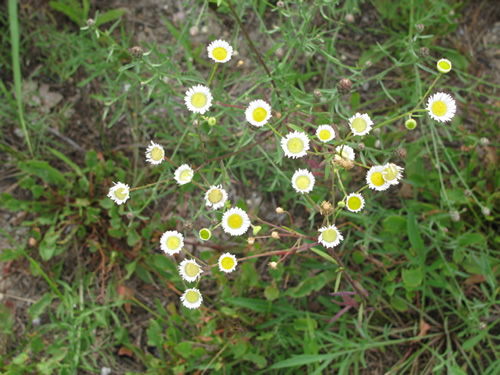
Observer: Paul Lauenstein
Observation Date: 5/17/25
Observation Time: 6:45 a.m.
Observation Location: Moose Hill Audubon Wildlife Sanctuary
Common Name: Dame’s Rocket
Scientific Name: Hesperis matronalis
Comments: Dame’s rocket is a tall, short-lived perennial, which produces white, pink or purple flowers in the spring. Known for its colorful and fragrant blooms, the plant has been a traditional garden favorite. However, in recent years, Dame’s rocket has gone rogue, moving from yards and garden plantings into the adjoining landscapes.
This patch was growing beside the barn on the Billings Loop.
More Information: Applied Ecological Services
Observer: Paul Lauenstein
Observation Date: 6/4/20
Observation Time: 11:15 a.m.
Observation Location: Moose Hill Audubon Wildlife Sanctuary
Common Name: Dame’s Rocket
Scientific Name: Hesperis matronalis
Comments: Dame’s rocket (Hesperis matronalis) is a tall, short-lived perennial, which produces white, pink or purple flowers in the spring. Known for its colorful and fragrant blooms, the plant has been a traditional garden favorite. However, in recent years, Dame’s rocket has gone rogue, moving from yards and garden plantings into the adjoining landscapes. These flowers were growing rampantly in the Billings Loop meadow.
More Information: Applied Ecological Services
Observer: Paul Lauenstein
Observation Date: 5/23/18
Observation Time: 9:30 a.m.
Observation Location: Moose Hill Audubon Wildlife Sanctuary
Common Name: Dandelion
Scientific Name: Taraxacum officinale
Comments: Native to Europe, it has spread nearly worldwide. The young leaves can be eaten raw or cooked. The taproot can be boiled and eaten or dried and ground as a base for a hot drink.
More Information: Go Botany
Observer: Paul Lauenstein
Observation Date: 6/27/15
Observation Time: 3:30 p.m.
Observation Location: my back yard (Gavins Pond Road)
Common Name: Deptford Pink
Scientific Name: Dianthus armeria
Comments: Deptford Pink is an introduced species from Europe.
More Information: Maryland Biodiversity Project
Observer: Paul Lauenstein
Observation Date: 7/6/14
Observation Time: 12:45 p.m.
Observation Location: near Gavins Pond
Common Name: Deptford Pink
Scientific Name: Dianthus armeria
Comments:The Deptford pink is a European species, introduced and widespread in North America. Its name refers to the English town near London in which this species was formerly common.
More Information: Go Botany
Observer: Paul Lauenstein
Observation Date: 5/26/10
Observation Time: 5:25 p.m.
Observation Location: edge of woods by Gavins Pond near soccer fields
Common Name: Dewberry
Scientific Name: Rubus flagellaris
Comments: Dewberries are found in the eastern half of North America. Indians prepared a tea using northern dewberry roots to calm stomach irritation. The fruits are large and tasty. They can be eaten raw or used in jams, jellies, and sauces.
Dewberries start out green, then turn to orange, then red, and finally black when fully ripe.
More Information: Wikipedia
Dewberry blossom photographed on 5/26/10:
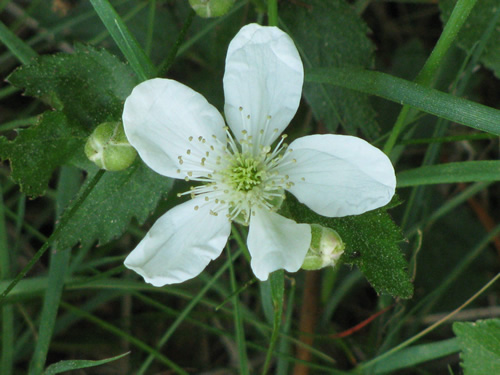
Unripe dewberries photographed on 6/27/10:
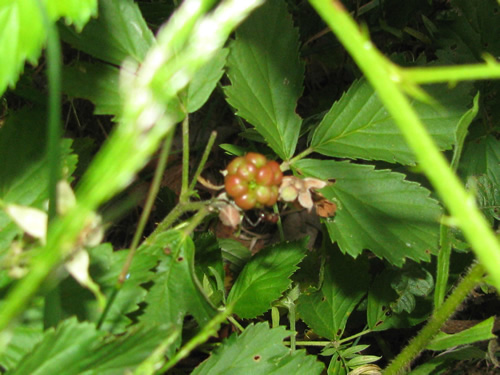
Ripening dewberries photographed on 6/28/10 at 147 Wolomolopoag St.
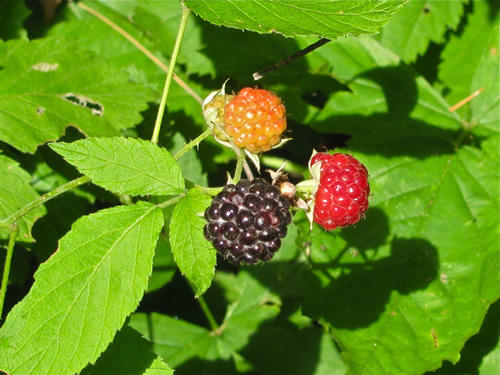
Observer: Rita Corey
Observation Date: 8/13/20
Observation Time: 1:40 p.m.
Observation Location: Rattlesnake Hill
Common Name: Downy Rattlesnake Plantain Orchid
Scientific Name: Goodyera pubescens
Comments: Please don’t dig up wildflowers.
More Information: Virginia Native Plant Society
Observer: Rita Corey
Observation Date: 6/23/19
Observation Time: 2:15 p.m.
Observation Location: Rattlesnake Hill
Common Name: Downy Rattlesnake Plantain Orchid
Scientific Name: Goodyera pubescens
Comments: Please don’t dig up wildflowers.
More Information: USDA Plant Fact Sheet
Observer: Paul Lauenstein
Observation Date: 5/14/11
Observation Time: 2:10 p.m.
Observation Location: Moose Hill Audubon Wildlife Sanctuary
Common Name: Dwarf ginseng
Scientific Name: Panax trifolius
Comments: This diminutive variety of ginseng has no “medicinal” properties.
It blooms in spring and dies back in summer.
More Information: US Forest Service
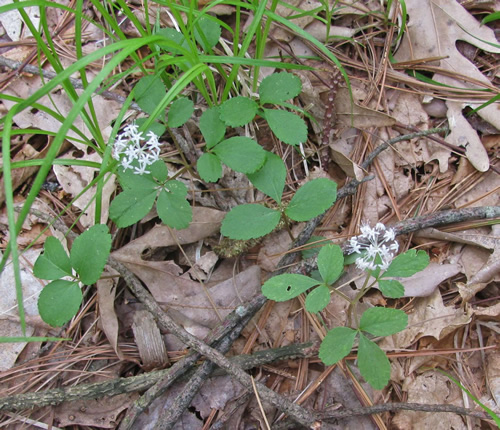
Observer: Paul Lauenstein
Observation Date: 4/28/24
Observation Time: 10:45 a.m.
Observation Location: Moose Hill Farm (TTOR)
Common Name: Early Meadow Rue
Scientific Name: Thalictrum dioicum
Comments: Early meadow-rue is a graceful, 8-30 in. perennial with long-stalked leaves divided into many delicate, lobed segments. Petal-less flowers have yellow stamens that hang like small tassels. The female tassel-like blossoms are purple and appear on separate plants.
This flower blooms in the spring, just as the trees are leafing out, which accounts for its common name. The species name alludes to the fact that the male and female flowers are on separate plants, and is derived from the Greek word meaning “two households.”
More Information: Lady Bird Johnson Wilflower Center
Observer: Paul Lauenstein
Observation Date: 6/23/19
Observation Time: noon
Observation Location: Billings Loop Botanical Trail
Common Name: Enchanter’s Nightshade
Scientific Name: Circaea quadrisulcata
Comments: Enchanter’s nightshade is a member of the primrose family.
More Information: UMass Amherst Weed Herbarium
Observer: Paul Lauenstein
Observation Date: 6/2/20
Observation Time: 10:55 a.m.
Observation Location: Moose Hill Farm (TTOR)
Common Name: False Solomon’s Seal
Scientific Name: Maianthemum racemosum
Comments: This herbaceous perennial plant is unbranched and grows to about knee-high. The central stem is somewhat erect and ascending. Flowers (then berries) occur at the end of the plant. Flowers occur in a plume-like cluster of minute florets and transform into a “bunch” of ruby red berries (although they do not all ripen at the same time).
The berries are edible and somewhat bittersweet (caution: large quantities can have a laxative effect). In traditional medicine the dried rhizomes can be used to brew a tea to treat coughs and constipation.
More Information: Edible Wild Food
Note the flower at the tip end of the plant. This distinguishes it from true Solomon’s Seal, which has flowers hanging in a row along the underside of the stem.
Observer: Paul Lauenstein
Observation Date: 4/27/24
Observation Time: 4:30 p.m.
Observation Location: Moose Hill Farm (The Trustees of Reservations)
Common Name: Garlic mustard
Scientific Name: Alliaria petiolata
Comments: Garlic Mustard is a biennial. First year plants are a rosette of 3 to 4 round, scallop edged leaves. In second year the plant reaches height of 2 to 3 feet.
Leaves on bolting stems are triangular with large teeth. Flowers are white.
Introduced to North America in the 1860s as a culinary herb, garlic mustard is now a significant problem in woodlands of eastern United States.
More Information: Iowa State University Extension & Outreach
Observer: Paul Lauenstein
Observation Date: 5/28/23
Observation Time: 11:45 a.m.
Observation Location: Moose Hill Farm (under high tension wires)
Common Name: Golden Ragwort
Scientific Name: Senecio aureus (also known as Packera aurea)
Comments: Golden Ragwort is a biannual plant with yellow-orange flowers. It grows to a height of 2 feet and belongs to Asteraceae family (i.e. asters).
More Information: Grow Native
Observer: Paul Lauenstein
Observation Date: 5/30/20
Observation Time: 3:50 p.m.
Observation Location: Moose Hill Farm
Common Name: Golden Ragwort
Scientific Name: Senecio aureus (also known as Packera aurea)
Comments: Golden Ragwort is a biannual plant with yellow-orange flowers. It grows to a height of 2 feet and belongs to Asteraceae family (i.e. asters).
More Information: New Moon Nursery
Observer: Paul Lauenstein
Observation Date: 6/4/11
Observation Time: 2:20 p.m.
Observation Location: conservation land near Billings Street
Common Name: Golden Ragwort
Scientific Name: Senecio aureus
Comments: Golden Ragwort is a biannual plant with a yellow flower that grows upto a height of 2 feet and belongs to Asteraceae family (i.e. asters).
More Information: HealthBenefitsTimes.com or Illinois Wildflowers
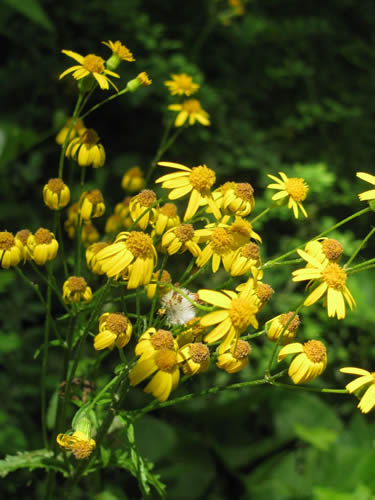
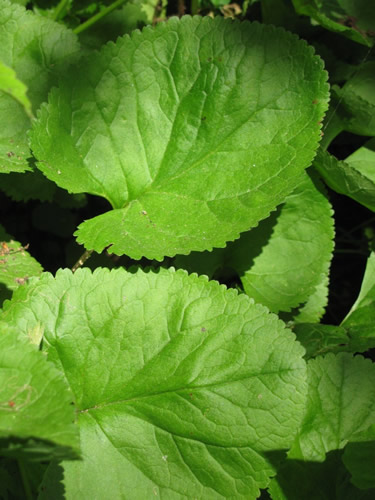
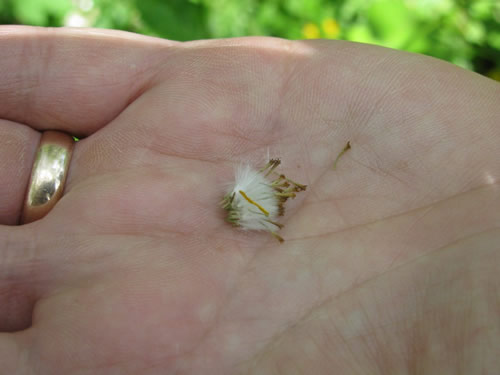
Observer: Paul Lauenstein
Observation Date: 9/12/09
Observation Time: 11:25 a.m.
Observation Location: Gavins Pond
Common Name: Goldenrod
Scientific Name: Solidago sp.
Comments: Goldenrod gets a bad rap as a cause of autumn allergies. The real culprit is ragweed. In fact, goldenrod has medicinal properties.
More Information: Great Plains Nature Center

Observer: Paul Lauenstein
Observation Date: 5/15/20
Observation Time: 9:40 a.m.
Observation Location: near Pond Street rotary by Lake Massapoag
Common Name: Ground Ivy (a.k.a. “Gill-over-the-ground”)
Scientific Name: Glechoma hederacea
Comments: Commonly known as ground-ivy, gill-over-the-ground, creeping charlie, alehoof, tunhoof, catsfoot, field balm, and run-away-robin, it has numerous medicinal uses, and is used as a salad green in many countries. European settlers carried it around the world, and it has become a well-established introduced and naturalized plant in a wide variety of localities.
More Information: Go Botany and Wikipedia and Wildflowers of the United States
Observer: Paul Lauenstein
Observation Date: 5/23/18
Observation Time: 8:40 a.m.
Observation Location: Moose Hill Farm (TTOR)
Common Name: Ground Ivy (a.k.a. “Gill-over-the-ground”)
Scientific Name: Glechoma hederacea
Comments: Commonly known as ground-ivy, gill-over-the-ground, creeping charlie, alehoof, tunhoof, catsfoot, field balm, and run-away-robin, it has numerous medicinal uses, and is used as a salad green in many countries. European settlers carried it around the world, and it has become a well-established introduced and naturalized plant in a wide variety of localities.
Observer: Paul Lauenstein
Observation Date: 5/26/19
Observation Time: 8:40 a.m.
Observation Location: Moose Hill Farm (TTOR)
Common Name: Ground Ivy (a.k.a. “Gill-over-the-ground”)
Scientific Name: Glechoma hederacea
Comments: Commonly known as ground-ivy, gill-over-the-ground, creeping charlie, alehoof, tunhoof, catsfoot, field balm, and run-away-robin, it has numerous medicinal uses, and is used as a salad green in many countries. European settlers carried it around the world, and it has become a well-established introduced and naturalized plant in a wide variety of localities.
More Information: Go Botany and Wikipedia and Wildflowers of the United States
Observer: Jean Zaniewski
Observation Date: 9/23/24
Observation Time: 12:15 p.m.
Observation Location: Nstar high tension line property near Old Post Rd
Common Name: Hairy Mountain Mint
Scientific Name: Pycnanthemum verticillatum var. pilosum
Comments: This plant grows to 3 feet tall 3 feet wide. I was attracted to this wildflower as I walked because it is taller, more robust; and a later, more prolific flower producer than the Blunt Mountain Mint which I have cultivated in my home garden. Pollinators certainly seem to love both varieties.
More information: North Carolina Extension
Observer: Paul Lauenstein
Observation Date: 5/30/20
Observation Time: 4:45 p.m.
Observation Location: Moose Hill Farm (TTOR)
Common Name: Indian Cucumber Root
Scientific Name: Medeola virginiana
Comments: Indian cucumber-root is a common perennial of the forest understory in New England. As the name suggests, the edible root tastes somewhat like cucumber.
More Information: Go Botany
Observer: Paul Lauenstein
Observation Date: 5/30/10
Observation Time: 4:10 p.m.
Observation Location: Moose Hill Audubon Wildlife Sanctuary
Common Name: Iris (harlequin blueflag)
Scientific Name: Iris versicolor
Comments: The species has been implicated in several poisoning cases of humans and animals who consumed the rhizomes, which have been found to contain a glycoside, iridin. The sap can cause dermatitis in susceptible individuals.
More Information: The Flower Expert
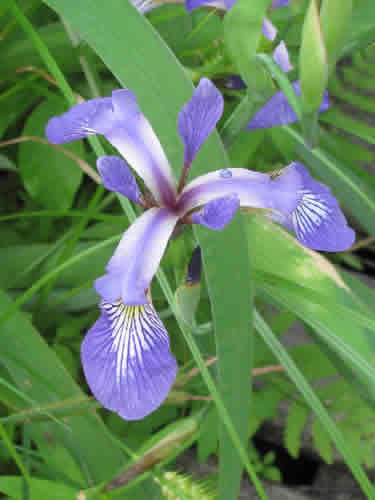
Observer: Paul Lauenstein
Observation Date: 5/13/23
Observation Time: 11:20 a.m.
Observation Location: Moose Hill Audubon Wildlife Sanctuary
Common Name: Jack-in-the-pulpit
Scientific Name: Arisaema triphyllum
Comments: Jack-in-the-pulpits grow in largely deciduous forests with plenty of shade. They prefer rich, moist soil and can often be found near wetlands and vernal pools.
In the late summer, after the plant’s flower has been pollinated, it produces a large clump of bright red berries. Each berry contains several seeds, which are spread by birds and other small animals after ingestion.
The plant’s leaves, berries, and corms contain calcium oxalate, which is a chemical compound that takes the form of tiny crystalline structures. Getting this on your bare skin can cause irritation, and ingesting the plant raw can be dangerous, sometimes resulting in choking or blisters. It is therefore recommended to avoid touching any part of the plant unless you’re wearing gloves and other skin protection.
Please do not dig up wildflowers. Leave them for others to enjoy.
More Information: Go Botany
Observer: Paul Lauenstein
Observation Date: 9/22/13
Observation Time: 3:15 p.m.
Observation Location: Gavins Pond Road near soccer fields
Common Name: Jerusalem Artichoke
Scientific Name: Helianthus tuberosus
Comments: Before the arrival of Europeans, Native Americans cultivated H. tuberosus as a food source. The tubers persist for years after being planted, so that the species expanded its range from central North America to the eastern and western regions. Early European colonists learned of this, and sent tubers back to Europe, where it became a popular crop and naturalized there. It later gradually fell into obscurity in North America, but attempts to market it commercially have been successful in the late 1900s and early 2000s.
The tuber contains about 2% protein, no oil, and little starch. It is rich in the carbohydrate inulin (8 to 13%), which is a polmer of the monosaccharide fructose. Tubers stored for any length of time convert their inulin into its component fructose. Jerusalem artichokes have an underlying sweet taste because of the fructose, which is about one and a half times as sweet as sucrose.
It has also been reported as a folk remedy for diabetes : since inulin is not assimilated in the intestine, it doesn’t cause a glycemic spike as potatoes would. Temperature variances have been shown to affect the amount of inulin the Jerusalem artichoke can produce. It makes less inulin in a colder region than when it is in a warmer region.
More Information: Wikipedia

